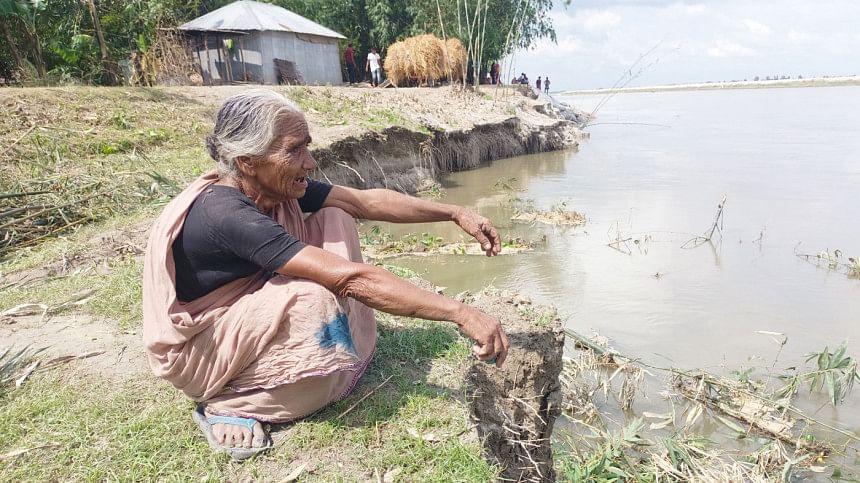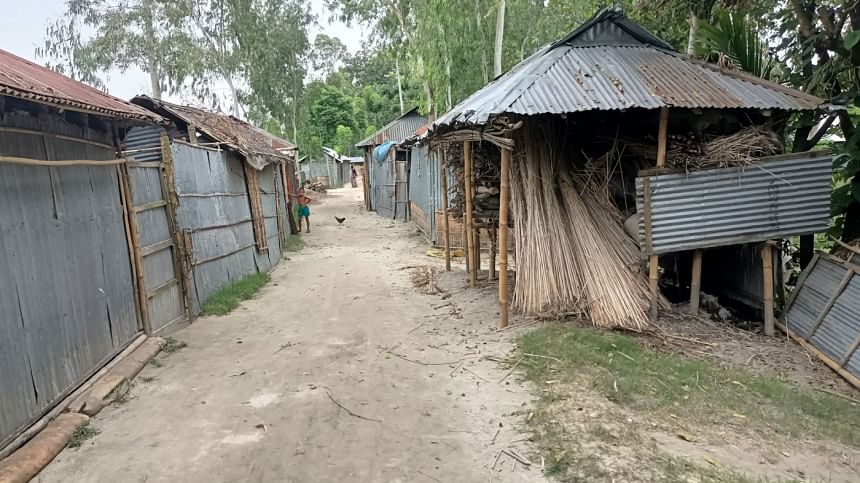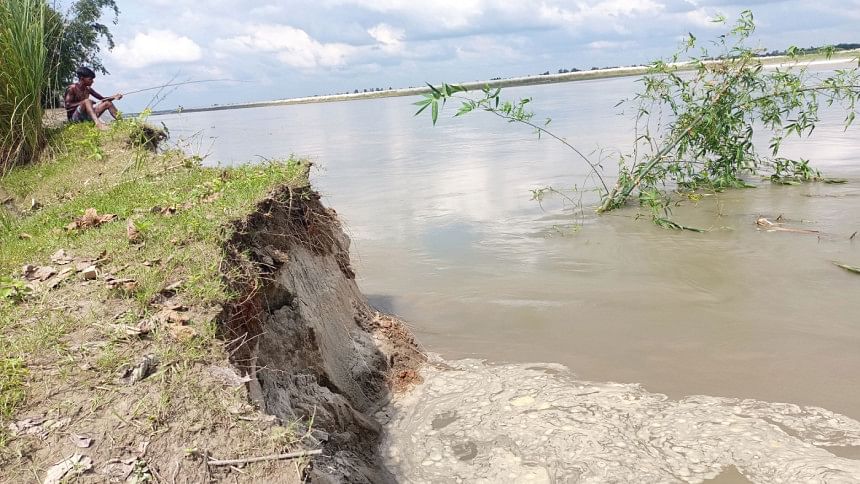12,500 families left homeless in 10 years

Narendra Nath Barman often visits the bank of the Teesta. Tears roll down his eyelids as the 75-year-old stands silently on the riverbed in Rajpur village of Lalmonirhat Sadar -- a place he once called home.
Once a prosperous man, Narendra now lives with one of his four sons Sridhar and his wife stays with their other son Bhabesh, as all his children now live in separate homes constructed on the Water Development Board dyke.

"We had 25 bighas of land which were enough to support my family, But everything is gone now," said Narendra.
Losing the last 10 bighas of arable land in the past decade, the couple now has nowhere to go and cannot afford two square meals every day.
Same is the state of Narendra's neighbours Gadli Bala, 70; Josna Bala, 72; and Suren Chandra Roy, 75; who now live on government roads after losing 12, nine and 15 bighas of cultivable land in the last nine years.
Once living as a happy family, Gadli now has to fight for food on her plate.
"My husband Binod died of a heart attack eight years ago when we lost everything to erosion. My sons relocated to Dhaka with their families. It is just me that remains here now," she said.
Unable to salvage their belongings, many other erosion victims, who once owned fruit orchards and farmlands, have also resorted to begging to survive.
According to Baktiar Rahman, a 65-year-old erosion victim from Falimari village of the upazila, 300 acres of arable land was lost to Dharla River erosion, affecting around 300 families.
Same is the condition in Sindurna village in Hatibandha upazila, as 80 families there now live separately as Teesta devoured over 150 acres of arable land in the last 3-4 years, said Nazrul Islam, a 56-year-old resident of the village.

According to District Relief and Rehabilitation Office, Department of Agriculture Extension, WDB and Education Office sources, Teesta and Dharla erosion has affected over 12,500 families in the last decade, devouring over 9,000 acres of arable land.
"22 out of 45 unions in the district are victims of erosion, with 80 percent among the affected being farmers in Teesta and Dharla shoal areas. Two bundles of tin and Tk 5,000 in cash have been given to each family for rehabilitation," she added.
Mashiur Rahman, chairman of Dawabari Union Parishad in Hatibandha, said around 4,000 families in his union were affected by erosion of the Teesta over the last decade. While some have received government assistance, the number is far less than needed.
Habibur Rahman, chairman of Moghalhat Union Parishad in Lalmonirhat Sadar said about 900 families in his union have suffered the same fate due to Dharla erosion in the last ten years. They now live on abandoned railway lines, dykes and roads.
Mofazzal Hossain Mofa, chairman of Rajpur Union Parishad of Sadar upazila said 70 percent of the 5,000 Teesta erosion-affected families in his union are now living in poverty.
Shunil Kumar, executive engineer of WDB in Lalmonirhat, said 20-22 points of Teesta and Dharla shoal areas in the district experience erosion every year. Around Tk 200 crore has been spent to monitor and prevent erosion in the last 10 years.
Shafiqul Islam, president (Lalmonirhat) of Teesta Bachao Nodi Bachao Sangram said, "River erosion is the main reason for the impoverishment of riverside people. If things do not change, thousands of families will lose everything."
Lalmonirhat Sadar Upazila Nirbahi Officer Jannatara Ferdous said, "Victim families are being offered assistance as per government allocation."

 For all latest news, follow The Daily Star's Google News channel.
For all latest news, follow The Daily Star's Google News channel. 



Comments